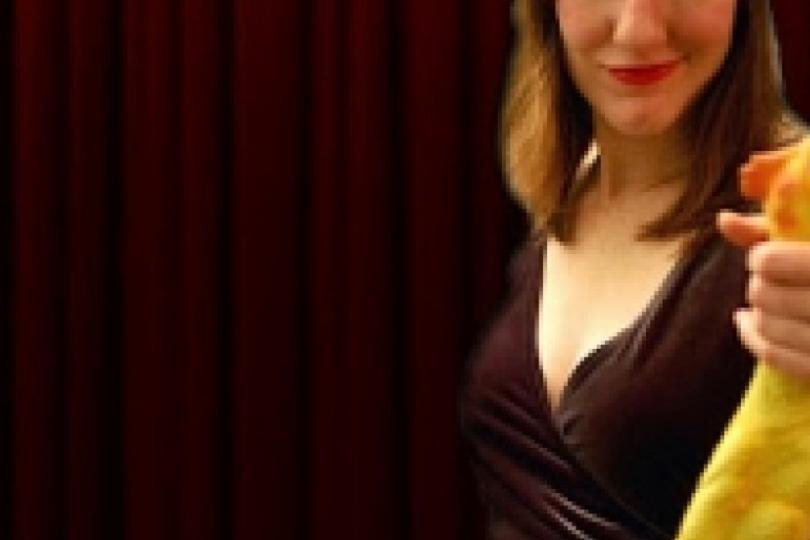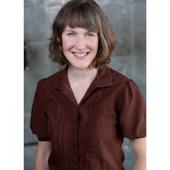What's the deal with Stand-Up and Improv
Editorial

I was recently asked why we, as lovers of funny shows and admirers of funny people, keep trying to double-bill improv and stand-up. And the question sent me into a tailspin.
What’s the deal with Stand-Up and Improv?
I am not here to say one is better than the other. I love and respect them both, and break into a ridiculous grin whenever I talk about either subculture. Minneapolis is blessed with some of the funniest people in the nation. You can catch them almost nightly at stand-up open mics or in small dark theaters pretending to raise wombats or fall in love.
Stand-up is probably the most recognizable comedic art form in America (sketch, ala Saturday Night Live, maybe being number two, and Judd Apatow being number three. If you say, “I do comedy” most people will assume that you’re a stand-up. Even if you say, "I do improv” most people will assume that you do stand-up. (I partially and lovingly blame “A&E’s An Evening at the Improv” - - the title is tricky.)
Americans have a cultural knowledge of sketch and of stand-up.
What’s improv again?
“A form of performance art in which actors/improvisers use improvisational acting techniques to perform spontaneously” (Thanks, wikipedia!>Improv is often grouped into two genres: short or long form.
"Short-Form" is insider jargon for games like you'd see on Whose Line is it Anyway or ComedySportz where the rules are decided on ahead of time. "Long-form" is insider jargon for a piece that may have a form set ahead of time ("we'll have monologues followed by scenes", or "it will be an improvised horror movie") but the individual scenes are free-form, with no set rules. (Thanks, HUGE Theater!)So why not put Stand-up and Improv together in a show? To be honest, a line-up of stand-up comedy and short or long form improv sounds delightful! They’re both funny. The people who perform them are generally funny. These art forms should fit together like chocolate and peanut butter. But they often don’t. WHY? For the sake of a theatrical comparison, it’s like acting for the camera versus acting for the stage, two very different muscles. Separately, they’re great. Together, they make each other look weird. I am now going to make a number of arbitrary judgements and angry-making assumptions. Arbitrary judgement #1) Stand-up is about the joke. The written, and then performed, joke. Arbitrary judgement #2) Improv is about the lack of joke. Arbitrary judgement #3) Stand-up is about "That’s weird” or “We’re weird” or "I’m weird” Arbitrary judgement #4) Improv is based on the idea of "Yes, And...” See how arbitrary these judgements are? "But Jen,” you might ask, "Don’t stand-ups use storytelling? Do character work? Don’t they riff with the audience? Isn’t that improv?” Hush, gentle reader. These arbitrary judgements are for this article alone. As soon as you’re done reading this, you can go find any number of performances to prove these judgements wrong. And that’s good. What about sketch? Arbitrary judgement #5) Sketch is the half brother of stand-up. Written, then performed. Just looks different. Arbitrary judgement #6) Sketch is the blood brother of improv. They’re brothers only in spirit. Sketch’s context can often be extreme and absurd, like improv. So sketch and improv might dress alike and look similar in practice, but they’re different in creation. Let’s break these terribly defining and constricting assumptions down. #1) Stand-up is about the written joke. These words have been tried and vetted. It’s the Hunger Games for comedic bits: dozens of other jokes have died to keep this joke alive. Every word is in service to the funny. #2) Improv can be the opposite of the joke. Improvisers can rehearse the form, the framing of the scenes, but we don’t know what the words or characters will be until they’re actually said on stage. Every move should be in service to the scene. As soon as a performer separates herself from a scene enough to comment on it (i.e. makes a joke), the scene dies. They’re no longer serving the scene, they’re serving the part of their ego that wants a laugh. That’s also when the suspension of disbelief flies out the window and the pact that we’ve made with the audience (“I believe this, so you believe this too”) is lost. The audience no longer sees a wizard on a desert island drinking a Fresca. They just see an actor in their nice jeans, trying to be funny. And no one wants to see that. #3) "That’s weird” Stand-up can often point out what’s wrong, what’s unfair, what’s strange. I equate Stand-up with social change: through laughter, you can approach uncomfortable subjects. And possibly change someone’s perspective. #4) "Yes, And...” The Yes part of "Yes, And..” means saying yes to a situation, and the And part means adding information. The situation is approached from a place of acceptance. Not what’s wrong or what’s missing, but what can be added and explored. I equate Improv with personal change: if there’s no wrong way to do this, and you have to accept whatever is given to you, then you have to also accept yourself. So, let's say you, future comedy theater producer, want to create a variety show, featuring stand-up and long form improv. Improv, if we’re being open and saying yes and adding to a situation, always has the chance of being, simply, not funny. It could be dark or strange or sad. If we’re being absolutely true to what we’ve created, the funny will come from honest discovery. It just requires patience and belief from both the performers and the audience. If you open a show with a stand-up who’s words have been practiced and honed to maximize the funny, you’ve trained an audience into that rhythm. And the improviser, unless they’re at the tippy top of their game, might feel the audience’s expectation for them to be instantly funny. And long-form improv generally doesn’t easily create instant humor. Short form improv might be an option. The games, the framing of the improv, is set up to be funny. But you’re still in the realm of theater, which takes a leap of faith from both audience and improviser. And, future comedy theater producer, how do you get an audience to transition from jokes to relationship-driven scenes? Okay, what if you start with improv? It’s not really ideal for the stand-up either, as they have to not only do their set, but basically re-train the audience, and build an entirely new context. What about sketch? Is sketch the answer? #5) Sketch and Stand-up are step brothers, and can sometimes go beautifully together! The only shift is from a single person telling written jokes to a written scene. However, welcome back to theater. This takes a suspension of disbelief from the audience. But, if written well, the sketch can grab them quickly into accepting this. Tricky, but doable. #6) Sketch and Improv are blood brothers in absurdism, but can feel weird when placed together. One is written, the other is not. The audience can feel cheated when jumping from one to the other. To switch from sketch to improv, you need a big transition and you need context. The Brave New Workshop has this down to a science: they give a big end to the sketch show, throw in an intermission, and then, once back, a quick and clear explanation is given (“Everything you’re about to see is totally made up on the spot"). And by this time, the audience is also very familiar with the performers, and are firmly on their side. (Only sadistic jerks would watch a 75 minute sketch show and then stay to heckle the improv afterwards. That sort of sadism takes dedication.)




